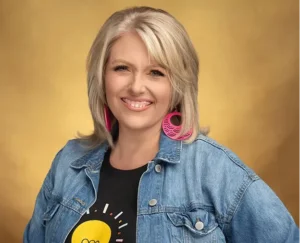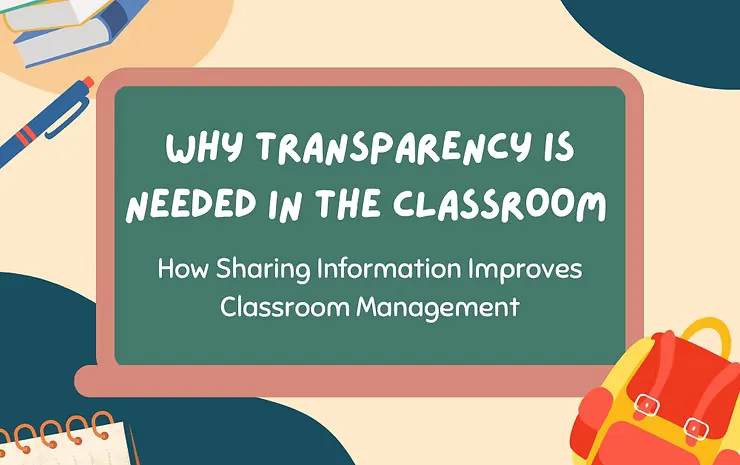Imagine a classroom where students enthusiastically approach every challenge, with the ability to think of multiple solutions creatively, the critical thinking skills to evaluate their options, and the resilience to persist through setbacks.
In today’s rapidly evolving world, these skills are not just advantageous but essential. The US’s biggest export is innovation, and as educators, we need to equip our students with the skills to keep that mantle afloat.
As educators, we have the unique opportunity to cultivate this powerful trio in our students, preparing them to thrive in a future full of unknowns. Let’s explore how we can transform our classrooms into dynamic environments where creativity, critical thinking, and resilience work together.
We can transform our classrooms and empower our students by embracing the interplay between creative thinking, critical thinking, and resilience. These three components are essential for nurturing well-rounded, mentally strong individuals ready to face the challenges of the modern world.
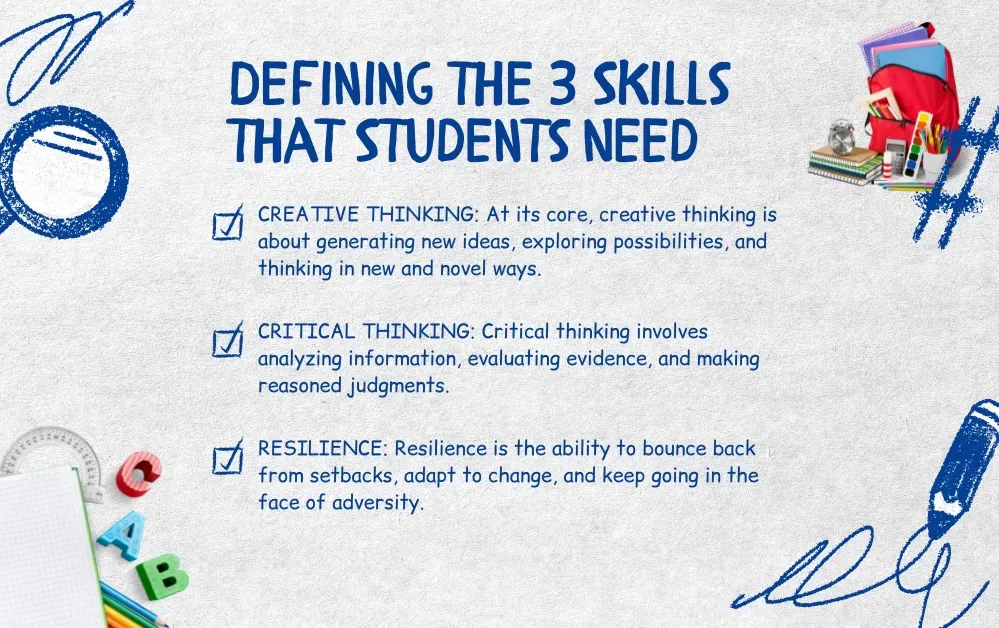
Defining the 3 Skills That Students Need
Creative Thinking: At its core, creative thinking is about generating new ideas, exploring possibilities, and thinking in new and novel ways. It encourages curiosity, allowing students to approach problems with fresh perspectives. Creative thinking is a skill that can be applied across all subjects and aspects of life.
Critical Thinking: Critical thinking involves analyzing information, evaluating evidence, and making reasoned judgments. It’s about questioning assumptions, identifying biases, and solving problems logically. This skill enables students to navigate complex situations, make informed decisions, and discern truth from misinformation.
Resilience: Resilience is the ability to bounce back from setbacks, adapt to change, and keep going in the face of adversity. It’s about maintaining a positive attitude, learning from failures, and persisting despite challenges. Resilience equips students with the strength to overcome obstacles and embrace growth.
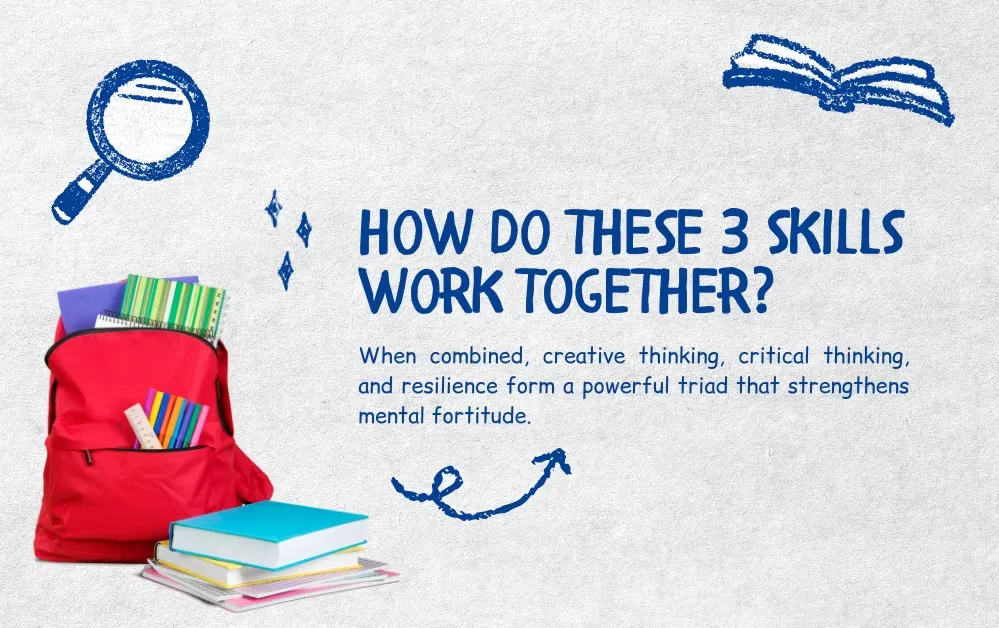
How These 3 Skills Work Together to Create Mentally Strong Individuals
When combined, creative thinking, critical thinking, and resilience form a powerful triad that strengthens mental fortitude.
Creative thinking sparks curiosity and opens the door to new ideas.
Critical thinking provides the analytical tools to evaluate these ideas and make sound decisions.
Resilience acts as the backbone, ensuring that students remain steadfast and motivated even when faced with challenges.
Consider a scenario where students are tasked with solving a real-world problem, such as designing a sustainable community. Creative thinking allows them to brainstorm innovative solutions, critical thinking helps them assess the feasibility and impact of each idea, and resilience encourages them to refine their approaches despite setbacks.
By integrating these components, we create an environment where students learn to embrace failure as a learning opportunity, think deeply about their choices, and confidently pursue their goals.
This holistic approach not only enhances academic performance but also builds the emotional intelligence and perseverance needed to succeed in life.
Additionally, allowing students to apply what they are learning in class to real-world situations increases engagement and makes learning more meaningful and relevant.
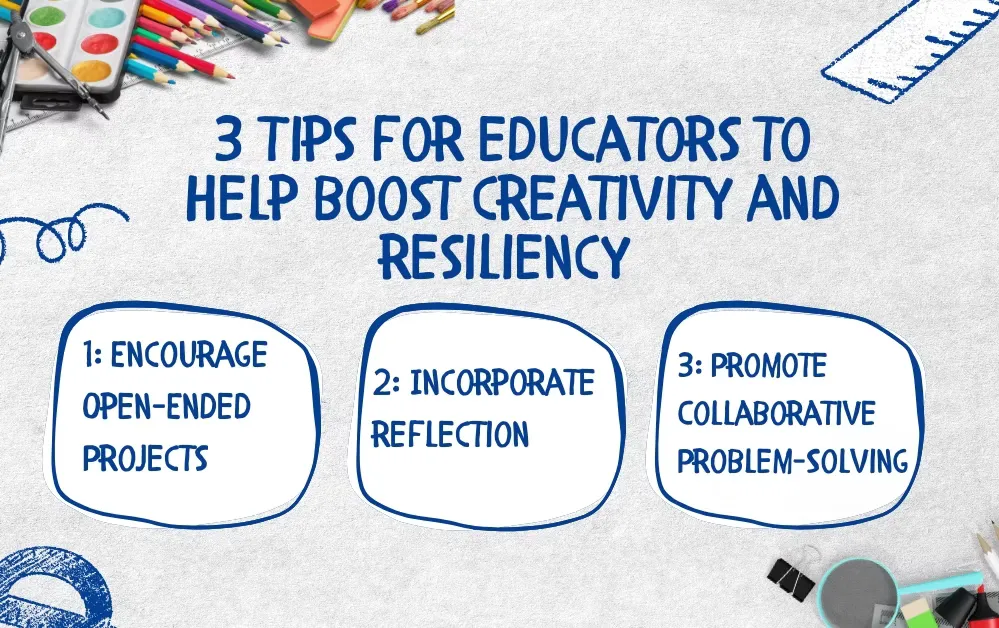
Tips for Educators: Building Creativity and Resilience in Schools
- Encourage Open-Ended Projects
- Strategy: Offer students projects with open-ended outcomes, allowing them to explore their interests and showcase their creativity.
- Example: In a history class, instead of a traditional essay, students could create a video essay or a mock debate on a historical event. This encourages them to think creatively about how to present their findings and critically evaluate different perspectives.
- Incorporate Reflection
- Strategy: Integrate reflection activities during each learning process step to help students build self-awareness and resilience.
- Example: After you return an assessment, encourage students to reflect on their learning experiences and identify areas for growth. This practice helps them develop resilience by fostering a positive mindset and emotional regulation and allows them to set goals for the next assignment.
- Promote Collaborative Problem-Solving
- Strategy: Design activities that require students to work together to solve complex problems, combining creative and critical thinking.
- Example: In a science class, present students with a real-world challenge, such as developing a plan to reduce plastic waste. Encourage them to brainstorm many possible solutions in groups, evaluate the pros and cons of each idea, and present their findings. This collaborative approach enhances critical thinking and resilience as students learn to navigate group dynamics and overcome obstacles together. It also encourages students to be open-minded, listen to different perspectives, and practice empathy.
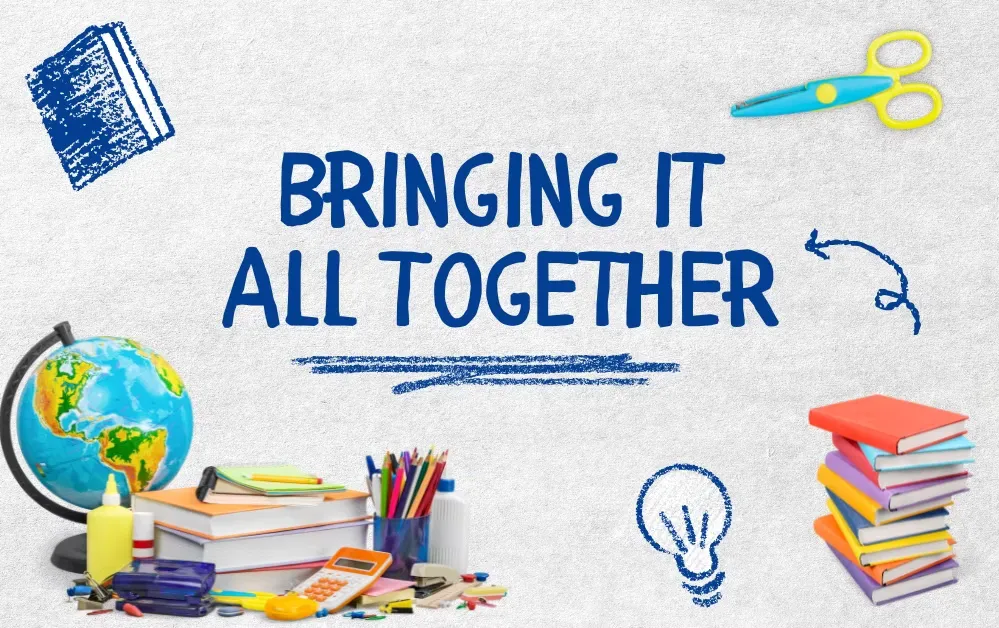
Bringing It All Together
As educators, we have the privilege and responsibility to shape the next generation’s minds. By fostering creative thinking, critical thinking, and resilience, we equip our students with the tools they need to succeed in an ever-changing world.
These skills not only enhance academic performance but also build the mental strength and adaptability needed to thrive in life.
Let’s continue to inspire our students to think boldly, question deeply, and persevere through challenges. Together, we can create classrooms that foster deeper thinking and resilience, empowering our students to impact the world positively.
How are you integrating these components into your teaching? I’d love to hear your thoughts.
At Curiosity 2 Create, we are dedicated to building classrooms where deeper thinking thrives. That’s why we developed the CREATE Method—interested in learning more? Book us for a keynote speaking event or a professional development workshop. You can also buy our book Deeper Thinking in the Classroom: A Practical Guide to the CREATE Method and/or the Teacher’s Companion Guide to Deeper Thinking in the Classroom: A Practical Guide to the CREATE Method.

